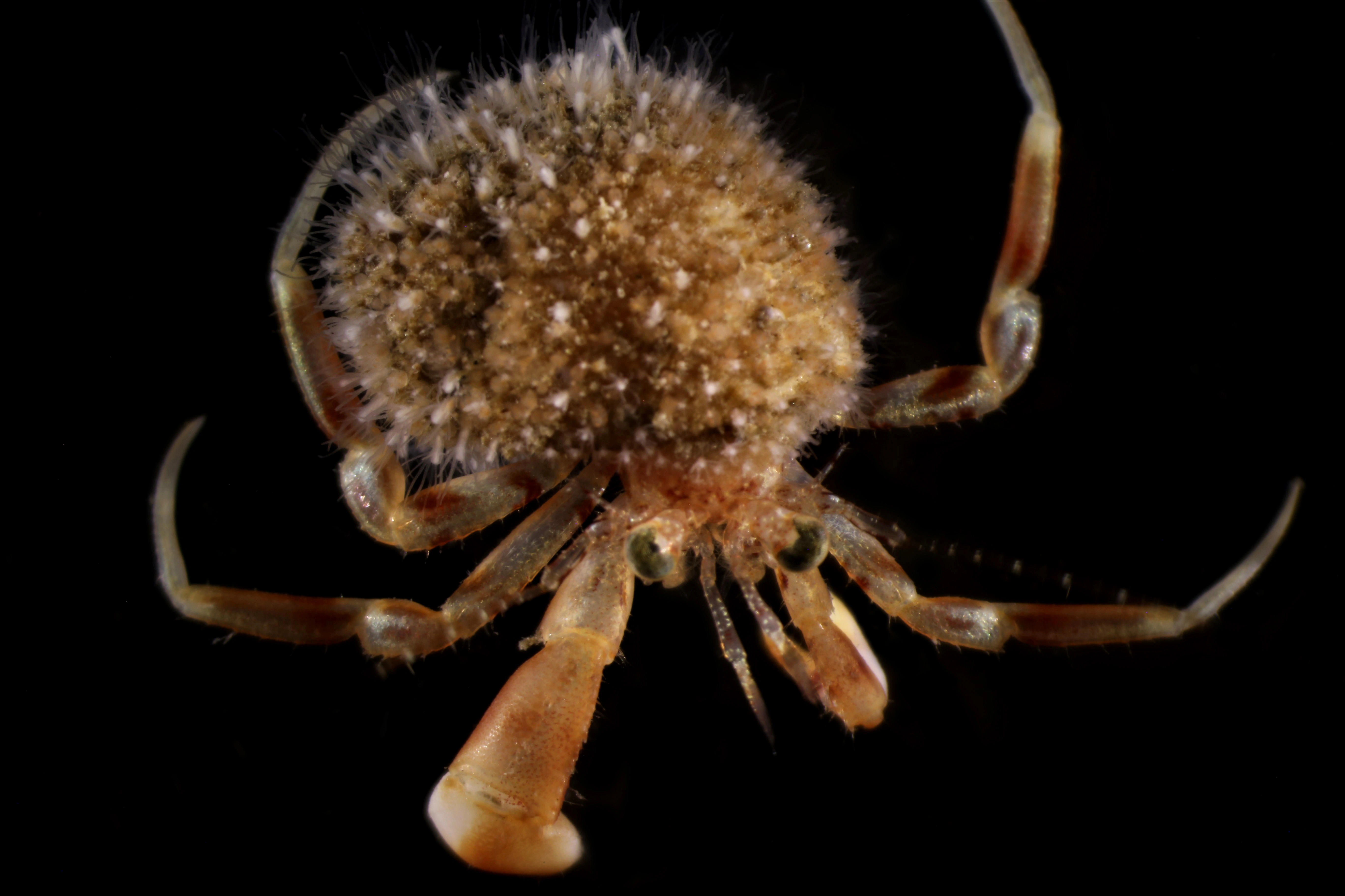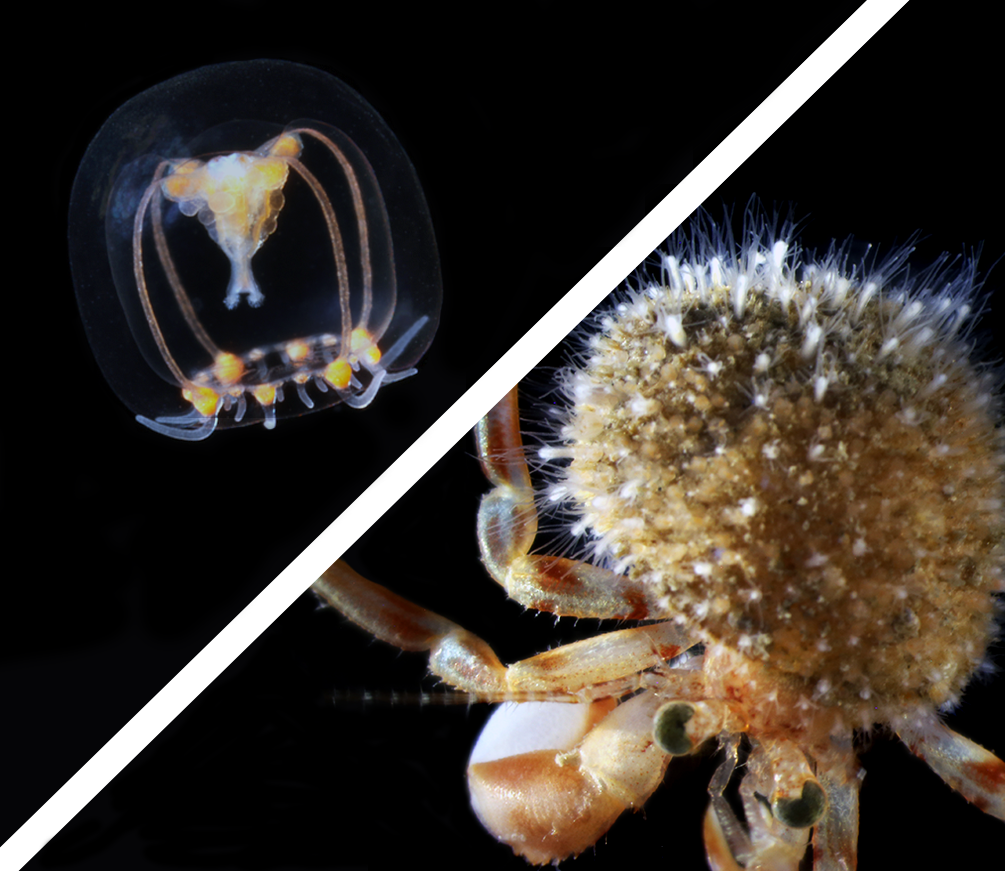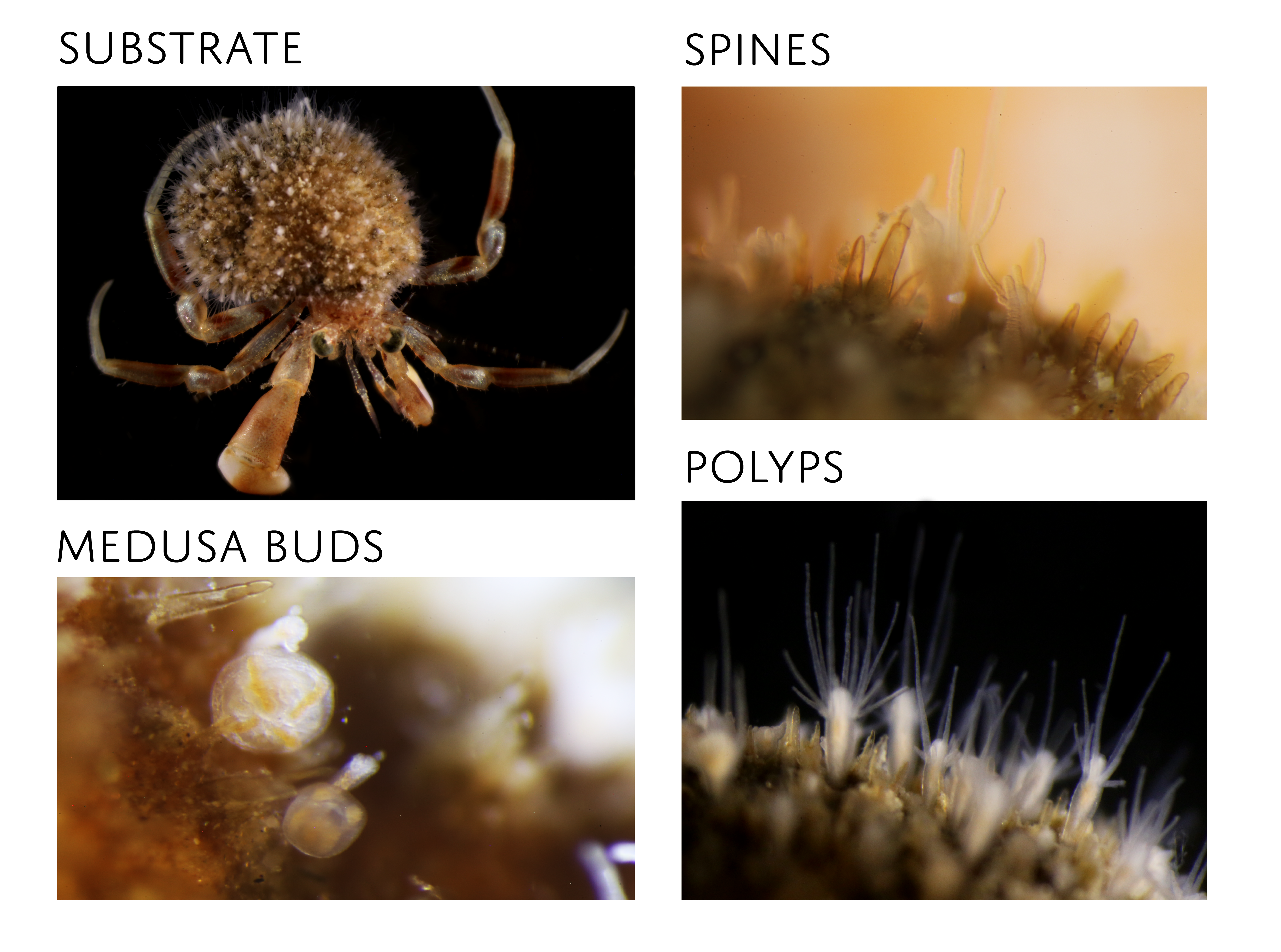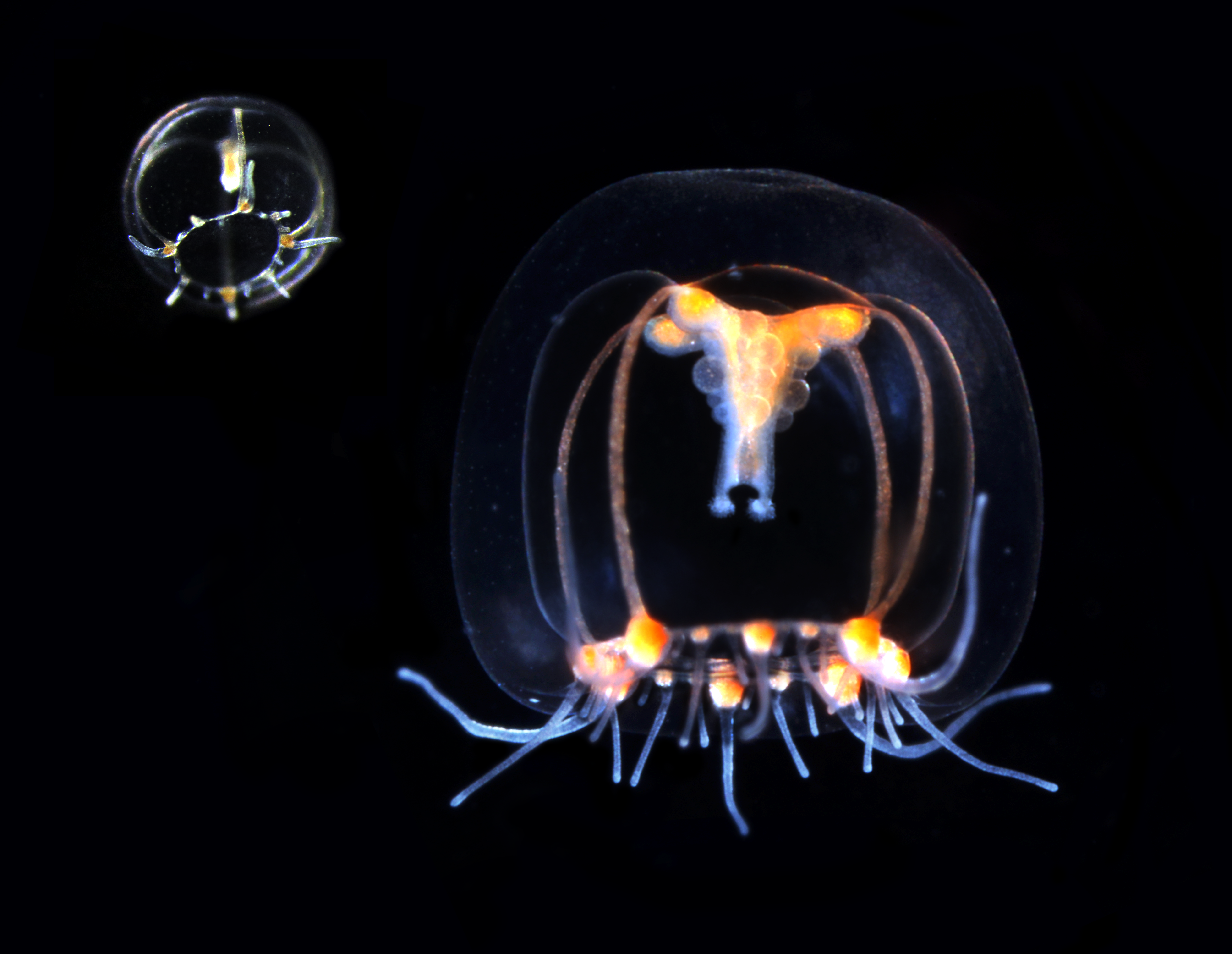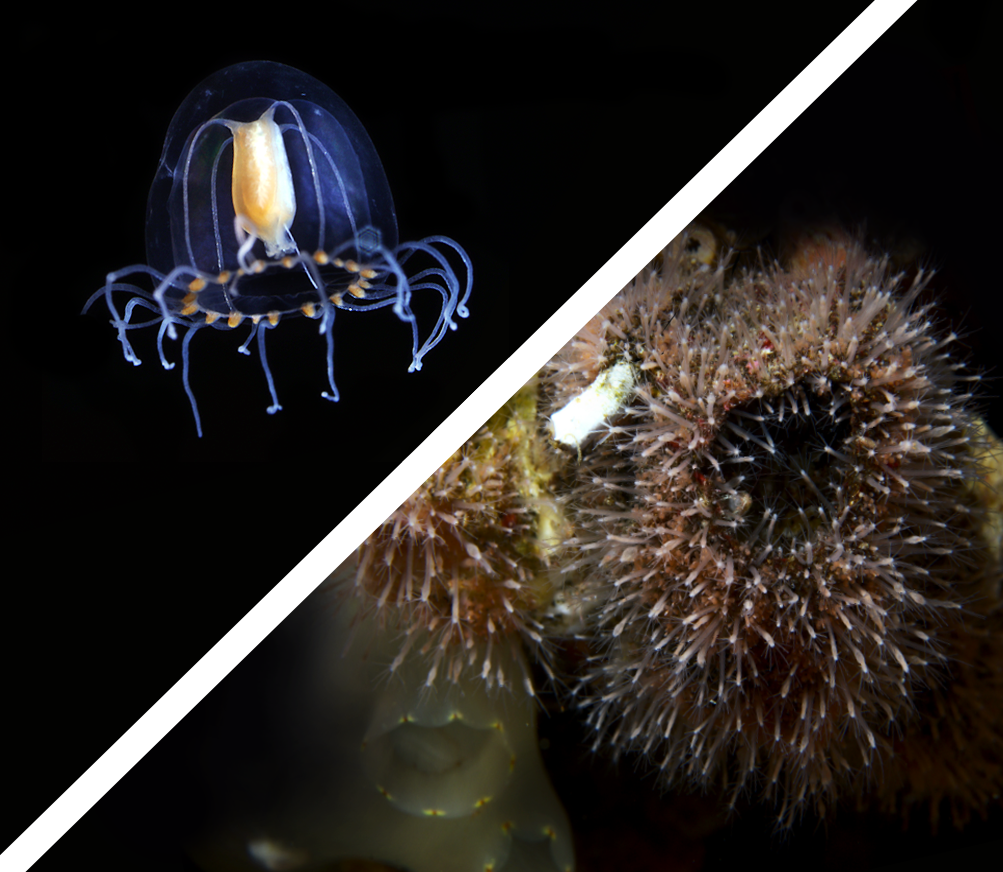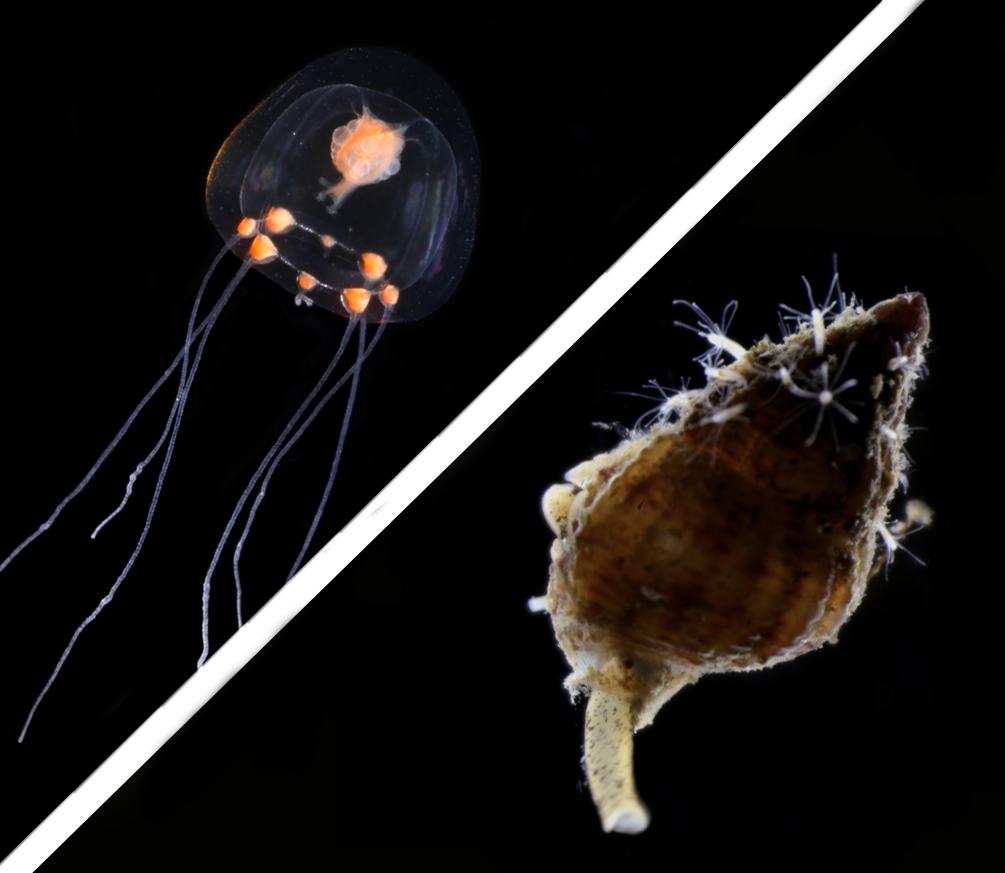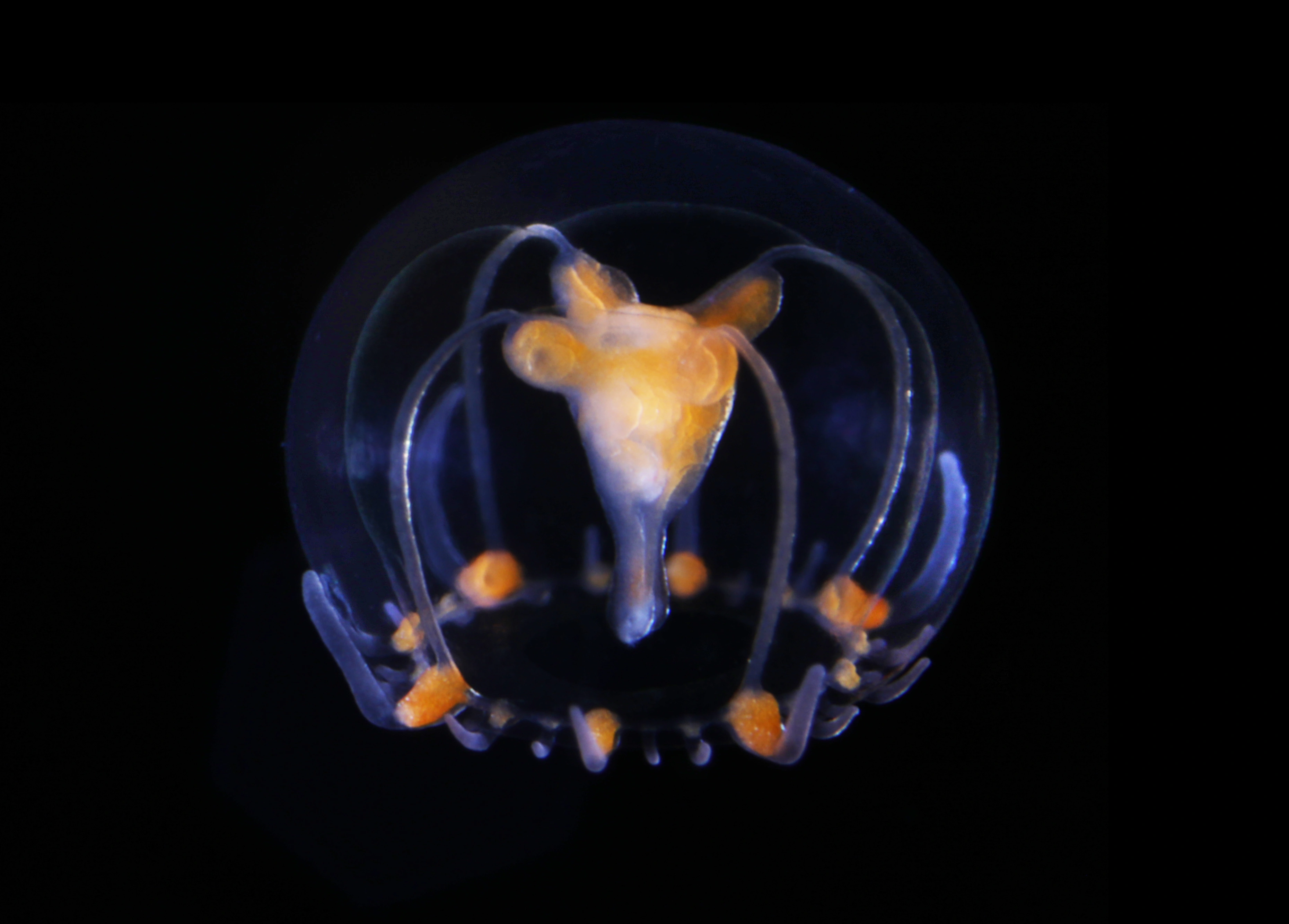Podocoryna areolata
The colonies of P. areolata grow on different substrates, including shells inhabited by hermit crabs.
This is a relatively common species, although it is more often recorded as a hydromedusa than as a polyp. The hydroid colonies of Podocoryna areolata grow preferably on snail shells that are inhabited by hermit crabs, while the hydromedusae occurs in surface waters. Unlike any other Podocoryna species in Norway, the manubrium of the hydromedusae of P. areolata has four basal pouches that extend a little along the radial canals, giving the impression of a cross when seen from above.
- Innhold
- Identification of hydroids
- Identification of hydromedusae
- Look-alikes
- Biology, ecology and behavior
- Distribution
Hydromedusa (left) and hydroid colony (right) life stages.
Identification of hydroids
The colonies of P. areolata have feeding polyps (gastrozooids), reproductive polyps (gonozooids), and defensive polyps (dactylozooids), although the dactylozooids may be absent depending on the substrate the colony is growing on. The gastrozooids are usually 1–2 mm high and have 4–14 tentacles. The gonozooids are smaller compared to the gastrozooids and usually have less tentacles (4–7). Depending on the substrate and environmental conditions, some colonies can develop spines, and when these are present they may be arranged in groups, which in Norwegian waters is unique for this species. Young and immature colonies or colonies without grouped spines are not identifiable to species.
Different views of the polyp stage of Podocoryna areolata.
Identification of hydromedusae
Adult hydromedusae are 3–4 mm high and have a diameter of approximately 4 mm. When fully mature, each hydromedusa has 40–60 tentacles of two different sizes: eight of these tentacles are longer and the rest, which are located in between longer tentacles, are conspicuously shorter and have smaller tentacle bulbs. The manubrium has four pouches extending along the radial canals at its base. The mouth has four lips, each ending in a single cluster of stinging cells. Young medusae have 16 tentacles when they are liberated.
Newly released (left) and adult (right) hydromedusae of Podocoryna areolata.
Look-alikes
Two other species of Podocoryna (P. borealis and P. carnea) are found in Norwegian waters, but the hydromedusae of both species are easily distinguished from P. areolata because they lack basal pouches in the manubrium. In addition, the hydromedusae of P. areolata have tentacles of two sizes, while the tentacles in P. borealis and P. carnea are all similar in structure and size.
Reproductive colonies of P. areolata differ from reproductive colonies of P. borealis and P. carnea because the medusa buds in P. areolata have 16 tentacles or tentacles stumps, while the medusa buds of P. borealis and P. carnea have eight or less tentacles or tentacle stumps. Young and infertile colonies of P. areolata can be recognized if they have spines arranged in groups, unfortunately most often the colonies of this species lack spines altogether.
Biology, ecology and behavior
The colonies of P. areolata grow preferably on snail shells inhabited by hermit crabs. Records from Norway are often of colonies associated with Anapagurus hermit crabs, but this species has also been found on the carapace of Inachus dorsettensis. The recorded depth range for the hydroid colonies is 13–275 m. The hydromedusae are more common near the surface in coastal waters, and in Norway they are present from spring to autumn.
The basal extensions of the manubrium are characteristic of the hydromedusae of P. areolata.
Distribution
The hydroids of P. areolata have rarely been recorded in Norway, but this may be due to confusion with other species of Podocoryna, in particular P. carnea. The records of the hydromedusae are more common in southern and western Norwegian waters, as well as the British Isles and the North Sea.
References
Hosia A & Båmstedt U (2007). Seasonal changes in the gelatinous zooplankton community and hydromedusa abundances in Korsfjord and Fanafjord, western Norway. Marine Ecology Progress Series 352: 113–127.
Kramp PL (1959). The Hydromedusae of the Atlantic ocean and adjacent waters. Dana-Report No. 46. 279 pp.
Schuchert P (2008). The European athecate hydroids and their medusae (Hydrozoa, Cnidaria): Filifera Part 3. Revue suisse de Zoologie 115(2):221–302.
Schuchert P (2012). North-West European athecate hydroids and their medusae: keys and notes for the identification of the species. Field Studies Council. Synopsis of the British Fauna (New Series) No. 59. 364 pp.
